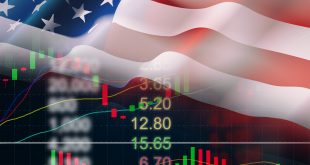The US is suffering from its highest inflation wave in 40 years according to newly released federal economic figures. For anyone hoping there would be an end to the exorbitant climb in prices before year-end, this was a disappointment. But it could be the peak.
The Bureau of Economic Analysis released new data Thursday showing that the Personal Consumption Expenditure (PCE), a key marker of inflation, has hit the highest level in nearly 40 years.
“The PCE price index for November increased above expectation by 5.7 percent from one year ago, reflecting increases in both goods and services…” BEA said. “Energy prices increased 34.0 percent while food prices increased 5.6 percent. Excluding food and energy, the PCE price index for November increased 4.7 percent from one year ago. That 5.7% increase is the fastest since 1982.
“The $104.7 billion increase in current-dollar PCE in November reflected an increase of $97.4 billion in spending for services and a $7.4 billion increase in spending for goods,” BEA said.
The sped-up taper has put the Fed in position to hike rates at the March 16 or May 4 meeting with market pricing suggesting May is most likely but the pressure will continue to mount to act in March with numbers like this. As a result, the US dollar is modestly higher after the data, knocking EUR/USD to a session low at 1.1300, down 22 pips.
American incomes also rose last month, but not as quickly as prices.Total incomes rose by 0.4%, or $90.4 billion, slightly less than in October, while disposable incomes also increased by 0.4% last month, corresponding to $70.4 billion.
According to the latest data, “the increase in services was widespread, led by housing and utilities. Within goods, an increase in nondurable goods (mainly gasoline and other energy goods) was partly offset by a decrease in durable goods (led by recreational goods and vehicles as well as motor vehicles and parts).”
The new report comes on the heels of other similar signals from economic data showing record-high inflation.
Federal economic data released earlier this month reported that the producer price index, a leading sign of inflation, increased 9.6% in the previous 12 months, the highest level since the government began tracking the metric in 2010.
At the same time, recently released data on the consumer price index, another major marker of inflation, reported the fastest increase in almost 40 years.
“The monthly all items seasonally adjusted increase was the result of broad increases in most component indexes, similar to last month,” the Bureau of Labor Statistics said. “The indexes for gasoline, shelter, food, used cars and trucks, and new vehicles were among the larger contributors. The energy index rose 3.5 percent in November as the gasoline index increased 6.1 percent and the other major energy component indexes also rose. The food index increased 0.7 percent as the index for food at home rose 0.8 percent.”
Continued inflation means higher prices on a range of goods and services for Americans. The Wharton School of the University of Pennsylvania, one of the country’s top business schools, released a report earlier this month that estimated much higher costs for American households this year because of inflation.
“We estimate that inflation in 2021 will require the average US household to spend around $3,500 more in 2021 to achieve the same level of consumption of goods and services as in recent previous years (2019 or 2020),” the report said.
“Moreover, we estimate that lower-income households spend more of their budget on goods and services that have been more impacted by inflation”, the report concluded.
 Noor Trends News, Technical Analysis, Educational Tools and Recommendations
Noor Trends News, Technical Analysis, Educational Tools and Recommendations





